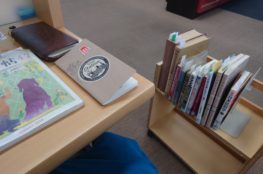My teacher recommend “The Book of Tea”
My teacher in Shin-geijyutsu School (New Art school) recommended “The book of Tea” for me to read. I started reading it and wished to write a blog about it.
It is an assignment given to everyone in the class.
I will be using the important points or lessons from the book as I write a blog about it.
Outline of this book
Kakuzo Okakura, who was known in America as a scholar, art critic, and Curator of Chinese and Japanese Art at the Boston Museum of Fine Arts, directed almost his entire adult life toward the preservation and reawakening of the Japanese national heritage — in art, ethics, social customs, and other areas of life — in the face of the Westernizing influences that were revolutionizing Japan around the turn of the century.
This modern classic is essentially an apology for Eastern traditions and feelings to the Western world — not in passionate, oversentimental terms, but with a charm and underlying toughness which clearly indicate some of the enduring differences between the Eastern and Western mind. Okakura exhibits the distinctive “personality” of the East through the philosophy of Teaism and the ancient Japanese tea ceremony. This ceremony is particularly revelatory of a conservative strain in Japanese culture; its ideals of aesthetic tranquility and submission to the ways of the past find no parallel in the major cultural motifs of the West.
Not only does he discuss the tea ceremony and its rigid formalities, and the cult and patterns of belief surrounding tea and tea-drinking, but Okakura also considers religious influences, origins, and history, and goes into the importance of flowers and floral arrangements in Japanese life — their proper appreciation and cultivation, great tea-masters of the past, the tea-room with its air of serenity and purity, and the aesthetic and quasi-religious values pervading all these activities and attitudes.
Okakura’s English style was graceful, yet exceptionally clear and precise, and this book is one of the most delightful essay-volumes to the English language. It has introduced hundreds of thousands of American readers to Japanese thinking and traditions. This new, corrected edition, complete with an illuminating preliminary essay on Okakura’s life and work, will provide an engrossing account for anyone interested in the current and central themes of Oriental life.
隠 Hide a beauty
As Charles Lamb said, “The greatest pleasure I know is to do a good action by stealth, and to have it found out by accident.” For the Way of Tea, “accepting one’s smallness and avoiding attachment to candid expression” is Tenshin’s idea of “beauty.”
From a modern perspective, humans are soiled by their lives in earthly society. The idea of distancing oneself from society and schooling and placing oneself in nature is has been passed down from Lao-tse to the tradition of Taoism.
Despite saying I am a minimalist and I don’t need “things”, I collect works of art. And without food I cannot live. This surely shows in what I write, the art that I produce and in my accessories too. What I own expresses my individuality. I both intend and do not intend this. This is written in Okakura Tenshin’s “Mono Ni Kanzureba Tsui Ni Ware Nashi.
p.192
The artwork has a its character. Okakura says that Grade and it becomes criteria of art critic.If we put the word of “Dignity” in other word to “Grade”,it turns to nonsense to discuss about the Person’s Dignity and the work’s Grade in the same topic.
However, artworks are both strange and mysterious organisms. AN author does not think at all of painting a work with personality or idiosyncrasies, yet the work ends up embodies by these very characteristics.
Perhaps accepting this contraction is heart of the world of beauty that pursues an ideal beyond this earthly realm.
To express oneself forcefully is not the way. One must keep one’s contradictions buried inside while also grasping and nurturing the “dignity” to be expressed. The Way of Tea is the art of hiding beauty to discover beauty – it purposely hints at an hesitation to express oneself.
芸 Become the nature
p.072
Tea masters strive to become more than just artists, to become art itself.
For one’s way of life to be art in itself, say, by filling a simple cup of tea under a single roof, feels similar to the thinking of Dominique Loreau.
This is because the realization that people with such refinement exists in a world stained with vulgarity drives straight to the heart. Such a “mindless” and overwhelmingly romantic person is depicted in Sen no Rikyu’s final tea ceremony.
Minami KINTO
「茶の本」
本を手にとったきっかけ。
新芸術校の課題図書として手にとったのがきっかけ。
アウトプットをすることによって読書を自分に定着させるためにレポートを記しておく。
(ちなみに、「目の神殿」はAmazonでも取り寄せに3週間かかるので注意である。)
本のあらすじ
「茶の本」は最後の述作であり、天心円熟期の代表作として広く知られている。原名は“The Book of Tea”で、明治三十九(1906)年五月に刊行された。
茶は大昔から中国で薬として知られていた。四、五世紀、淹(だし)茶が愛飲され陸羽によって「茶経」が著述され、十世紀以降など時代によっては抹茶が流行してはすたれ、十七世紀に入ってオランダ、フランス、ロシア、イギリスなどの西洋諸国に相次いで輸入されて広まった。
茶の湯は茶の飲み方の形式の単なる理想にとどまらない。利己主義と俗悪に満ちた世俗にみを置いている私たちの「性」のー一種宗教に類するー「術」である。
天心は、英文による以外の述作を一切残しておらず、本書はまさに“岡倉天心著作集”であるといっていいであろう。(p.413 茶の本)
隠 Hide a beauty
隠すという美
チャールズ・ラムの述べた「密かに善行を施し、偶然に発覚すること、それが何よりの楽しみである」という言葉が茶道の奥義を伝えるならば、「自らの矮小さを認め、ズケズケと現すことばかりに執着しない」ことこそが、天心の言うところの「美」だ。
では現代に照らし合わせてみれば、人間は社会の俗世に汚れきっている。そのような会社や学校などからいったん離れて、自然のひろがりに身を置いてみようという考えが老荘思想から道教に受け継がれていった。
私はモノは要らないと言いつつ作品をコレクションし、且つ飯を食わないと生きていけない。これは、私が書く文章に、作る作品に、アクセサリー類に現れているだろう。私が持つモノにも私の個性が表出している。それをしようと私が思おうと思うまいと。「岡倉天心 物ニ観ズレバ竟ニ吾無シ」に、こう書かれている。
p.192
作品には作品としての「品性」がある。岡倉は、それを「品位」と呼んで、批評の基準の一つとして挙げてさえいた。「品位」を「気格」といいかえてみると、個人の「品位」と作品の「気格」は同次元において論じる必要性がないかのようにみえる。(略)だが、芸術作品は、不思議でかつ不気味な生きものである。作者の人柄や個性を作者はその作品に塗り込もうなどとまったく考えてもいないのに、その作品は、作者の人柄や個性、つまり品性をちゃんと表出している。
その矛盾を受け入れることこそが、俗世ではできない、理想を追求する美の世界でのこころのあり方ではないだろうか。
もちろん、わざと自分を出そうとするのは邪道である。自分の中の矛盾をうちに秘めながら、しかし表出する「品位」を見定め、向上させていかなければならない。茶道は美を発見するために美を隠す術であり、あえて現わすことを憚るようなものを仄めかす術だからである。
虚 Religious and ordinary lifestyles
茶室という完璧な美のために俗世を離れる
茶室は茶人の為につくられる。茶人の好みによって活けられる花も掛け軸も変わる。茶室から入って出るまで、いったん俗世を捨てること。「いったん」というのは、茶室はテントのように建てられてからたたむことを前提に開かれるものだからだ。茶会は門を入るところから始まっている。飛び石に自然のあり方に従う法則に身を慣らし、にじり口を通って、聖域に入る。その都度入れ替えられた茶具、季節や客の好みを反映して工夫が施されている。茶人それぞれの為に作られた一点ものであるがゆえに、後世にのこることは本意では無い。むしろ、かりそめの姿であることこそが本来の姿だ。
水差しは中が空っぽであるからこそ、あらゆるものを受け入れ中に入れることができる無限の可能性を持っている。これが「虚」だ。
社会から離れ、自然に身を委ねようということ。
東洋の美は、永久にあることをよしとしない。花が最も尊いのは、寿命を全うすれば枯れるからだ。茶室からは、完璧で無いものを好む日本人の美意識や移り変わっていくものを大切に思う感性がうかがえる。
一度組み立てて、茶室をまた壊す。儚いものだ。
芸 Become the nature
芸術そのものになるということ
p.072
茶の宗匠の説によれば、芸術を真に鑑賞することは、芸術から強い影響力を生み出す人にとってのみ可能である。そこで彼らは茶室の中で得た優雅な高い標準によって日々の生活を律しようと努めた。(略)かくて茶の宗匠たちは芸術家以上のものー即ち芸術そのものーになろうと努力した。
生き様が芸術そのものであるということは、たとえば一杯のお茶と屋根一つで満たされると言ったドミニック・ローホーの考えに近いように感じる。
“Smile at a foolishness”と、花が愚かしさに微笑んでいると言って、人と自然とを対等に置けるのも、人間が自然に身を委ね、自然もまた人間の作った茶道の中で輝くからこそ成り立つ絶妙なバランスの美学である。
自然をできるだけそのままに、芸術を真に鑑賞する為には日々の生活を律し芸術そのものに身を委ねること。それは、世俗から離脱し、矛盾を受け入れ、美そのものになろうと顔は涼しく、熱い想いで命を燃やす芸術家の心を強く奮い立たせる。それは、花について語る時のやりすぎなくらいのロマンチックさ、上品ながらも不倫しながらも、東洋の美が当然西洋と同じ価値があることに疑いを持たず居続けた天心の生き様が、世俗にまみれつつも、この様な気品ある人間が生きていたのだということが、胸を打つからだ。利休の最後の茶会を圧倒的なロマンチックさで書き上げ、ヒートアップし、最後の頂点のところで「茶の本」のしめとするのも、常に「夢中」な人だなという印象を持つ。
他人の目が気になる
そして興味深いのが、「他人の目が気になる」というやつを、先人も物悲しく思っているということだ。
p.57
小堀遠州についての話を思い出す。(略)「先生が利休以上に優れたご趣味をお持ちのことがわかります。と申しますのは、利休の収集品は千人に一人しかわかる者がいなかったからでございます」と彼らはいった。遠州は悲しげに答えていった。「これは私が如何にも平凡であることを証明しているにすぎない。偉大な利休は自分にだけ訴える物を愛する勇気があったが、私は知らず識らず多数の人々の趣味に迎合している。誠に利休は茶人の中でも千人にひとりの茶人であった。」
茶の本、最後に向けてフェーダーを上げきってフェーダーとれちゃったみたいな感覚で、読み終えてしまってすごく寂しいという感じがある。もう一度読み、「日本の目覚め」なども読んでいきたい。
おまけ:岡倉天心 物ニ観ズレバ竟ニ吾無シ
天心という名が、最初は落款代わりに使われ、書簡でも公的文書でも使われなかったというのは驚いた。再興日本美術院の人たちによって、岡倉先生を天心と呼ぶようになったようだ(p.6 参照)





